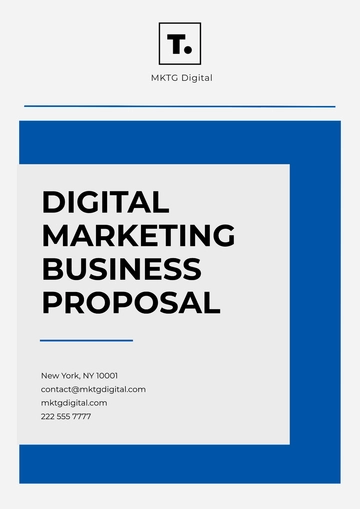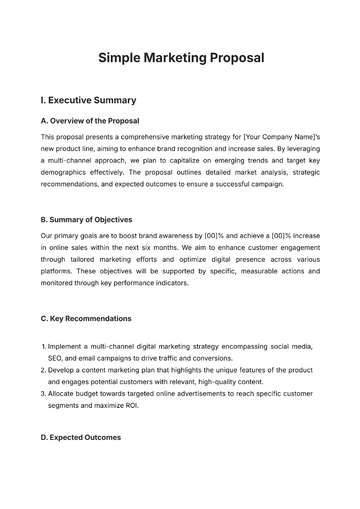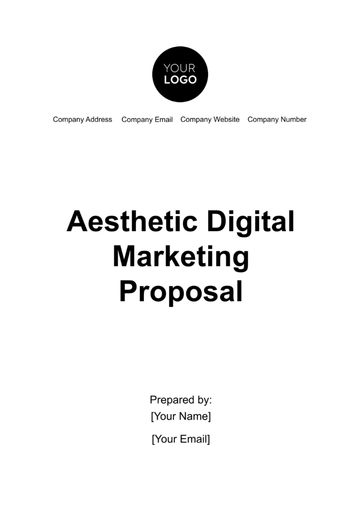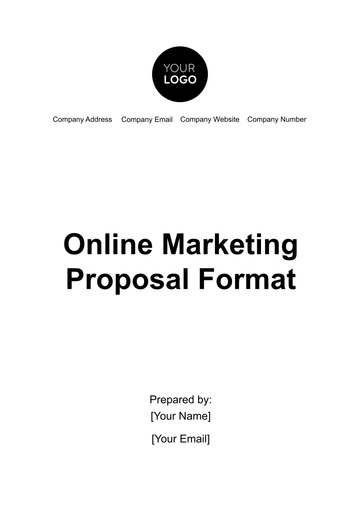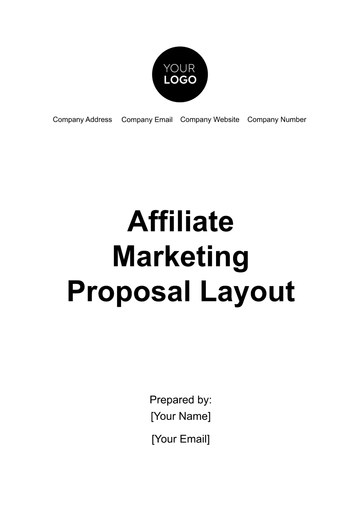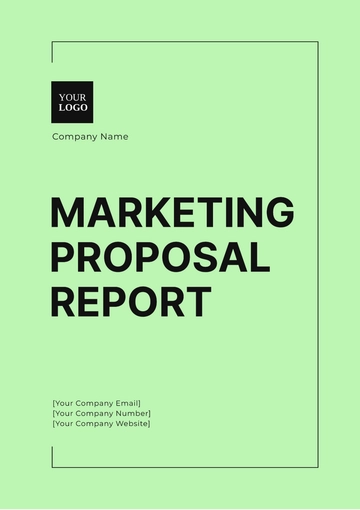Free Blank Marketing Proposal

Prepared for: | [CLIENT NAME/ORGANIZATION] |
|---|---|
Prepared by: | [YOUR NAME] |
Company: | [YOUR COMPANY NAME] |
Date: | [DATE] |
I. Executive Summary
Provide a concise and compelling overview of the marketing proposal. Highlight the campaign’s purpose, primary objectives, and the anticipated impact. Ensure this section grabs the reader’s attention by summarizing the value proposition and presenting a high-level snapshot of the strategies and expected outcomes.
II. Objectives
Define the specific, measurable, achievable, relevant, and time-bound (SMART) goals of the marketing campaign. Examples include increasing brand awareness by 20% within six months, generating 500 new leads per month, or achieving a 15% conversion rate.
III. Target Audience
Detail the characteristics of the target audience:
Demographics: Age, gender, income level, education, occupation, etc.
Psychographics: Interests, values, attitudes, lifestyle, and preferences.
Key Behaviors: Buying patterns, preferred communication channels, and engagement tendencies. Include data-driven insights and customer personas for clarity.
IV. Marketing Strategies
Outline the specific approaches and tactics to be employed, aligned with the objectives:
Content Marketing: Blogs, videos, infographics, and social media posts.
Digital Advertising: PPC campaigns, display ads, and retargeting.
Social Media Strategy: Platforms, content types, and engagement plans.
Partnerships: Collaborations with influencers or complementary brands.
Traditional Advertising (if applicable): TV, radio, or print ads. Explain why these strategies are suitable for reaching the target audience and achieving the set goals.
V. Budget
Provide a detailed breakdown of the estimated costs:
Personnel: Internal team salaries or outsourced services.
Media Spend: Ad placements and bidding costs.
Tools and Software: Analytics platforms, content creation tools, and automation software.
Miscellaneous: Printing, shipping, or unexpected expenses. Ensure transparency by categorizing costs and including a total budget estimate.
VI. Timeline
Include a detailed timeline of campaign milestones and activities. Use a Gantt chart or table format to outline:
Start and end dates for each phase.
Key deliverables and deadlines.
Dependencies and critical milestones. This section should provide a clear roadmap for the campaign’s implementation.
VII. Measurement & Evaluation
Explain how the campaign’s success will be measured:
Key Performance Indicators (KPIs): Metrics such as website traffic, lead generation, sales, or customer retention.
Tools and Methods: Analytics platforms, surveys, or focus groups.
Reporting Frequency: Weekly, monthly, or end-of-campaign evaluations. Detail the process for analyzing data and optimizing strategies based on performance.
VIII. Conclusion
Summarize the proposal by reinforcing its objectives, strategies, and potential impact. Restate the campaign’s alignment with the organization’s broader goals and its anticipated return on investment (ROI). This section should inspire confidence in the proposed plan.
IX. Next Steps
Outline the action steps required for approval and implementation:
Obtain stakeholder approval.
Finalize contracts and agreements with vendors or partners.
Kick off planning and resource allocation.
Initiate the first phase of execution. Provide clear instructions for moving forward and timelines for decision-making.
X. Appendices
Include any supporting materials, charts, or references that add value to the proposal:
Market research data or competitor analysis.
Visual examples of proposed campaigns.
Detailed cost breakdowns or additional financial data.
Testimonials or case studies demonstrating past successes. Organize appendices for easy reference.
- 100% Customizable, free editor
- Access 1 Million+ Templates, photo’s & graphics
- Download or share as a template
- Click and replace photos, graphics, text, backgrounds
- Resize, crop, AI write & more
- Access advanced editor
Present your marketing strategies with confidence using Template.net’s Blank Marketing Proposal Template. Fully customizable and editable in our AI Editor Tool, it organizes goals, tactics, and deliverables into a clear, professional format. Perfect for marketers, this template ensures well-structured, compelling proposals that effectively communicate your vision and win client approval.
You may also like
- Business Proposal
- Research Proposal
- Proposal Request
- Project Proposal
- Grant Proposal
- Photography Proposal
- Job Proposal
- Budget Proposal
- Marketing Proposal
- Branding Proposal
- Advertising Proposal
- Sales Proposal
- Startup Proposal
- Event Proposal
- Creative Proposal
- Restaurant Proposal
- Blank Proposal
- One Page Proposal
- Proposal Report
- IT Proposal
- Non Profit Proposal
- Training Proposal
- Construction Proposal
- School Proposal
- Cleaning Proposal
- Contract Proposal
- HR Proposal
- Travel Agency Proposal
- Small Business Proposal
- Investment Proposal
- Bid Proposal
- Retail Business Proposal
- Sponsorship Proposal
- Academic Proposal
- Partnership Proposal
- Work Proposal
- Agency Proposal
- University Proposal
- Accounting Proposal
- Real Estate Proposal
- Hotel Proposal
- Product Proposal
- Advertising Agency Proposal
- Development Proposal
- Loan Proposal
- Website Proposal
- Nursing Home Proposal
- Financial Proposal
- Salon Proposal
- Freelancer Proposal
- Funding Proposal
- Work from Home Proposal
- Company Proposal
- Consulting Proposal
- Educational Proposal
- Construction Bid Proposal
- Interior Design Proposal
- New Product Proposal
- Sports Proposal
- Corporate Proposal
- Food Proposal
- Property Proposal
- Maintenance Proposal
- Purchase Proposal
- Rental Proposal
- Recruitment Proposal
- Social Media Proposal
- Travel Proposal
- Trip Proposal
- Software Proposal
- Conference Proposal
- Graphic Design Proposal
- Law Firm Proposal
- Medical Proposal
- Music Proposal
- Pricing Proposal
- SEO Proposal
- Strategy Proposal
- Technical Proposal
- Coaching Proposal
- Ecommerce Proposal
- Fundraising Proposal
- Landscaping Proposal
- Charity Proposal
- Contractor Proposal
- Exhibition Proposal
- Art Proposal
- Mobile Proposal
- Equipment Proposal
- Student Proposal
- Engineering Proposal
- Business Proposal















